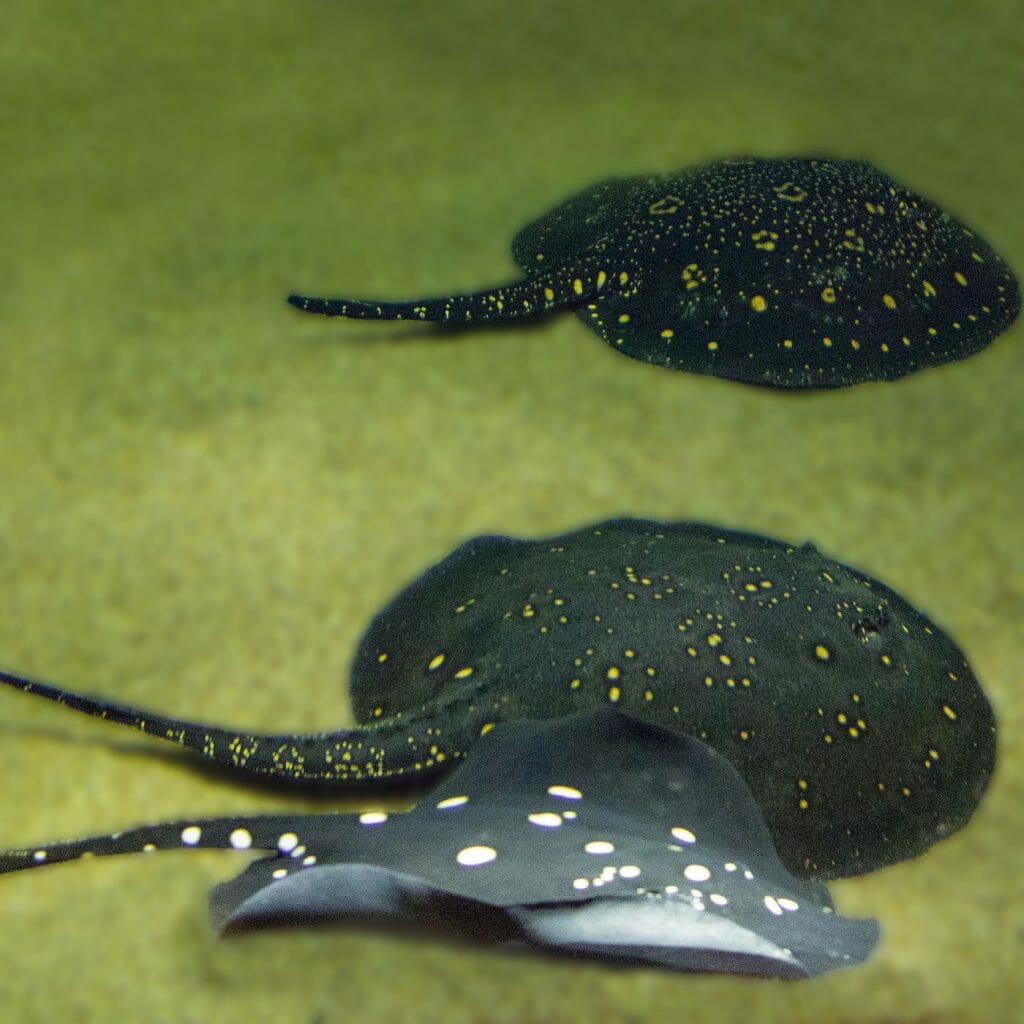Amazon Freshwater Stingrays Gain Much-Needed Protection — Will It Be Enough?

Meanwhile, there are ongoing taxonomic arguments over whether certain stingrays are different enough to count as separate species.
Researchers have observed some striking stingray behavior regardless of how many species exist. Some specialize in prey that we don’t usually think of sharks and rays eating, like insects. They’re capable of some basic [mathematical problem solving]and may be the only species of shark or ray that engages in any kind of [maternal care]
— J P Fontenelle (@jpf_ishes)
But the biological characteristic that has gotten these animals into conservation trouble is one not normally associated with threats to sharks and rays: Their spot patterns are absolutely beautiful. And that makes them very much in demand for the ornamental fish trade for home aquariums.
Every species has slightly different spot patterns, and hybrids, which can be bred in captivity, have all kinds of complex patterns. Some of these spots can even look like letters or numbers, which collectors request with certain initials.
While these spot patterns from captive-bred hybrids are gorgeous, for a certain type of hardcore hobbyist, it’s just not the same. “Some people color their dog pink, and it looks cool, but that’s not what a dog looks like, and some people want the real thing,” Charvet says.
That puts more pressure on wild populations, but at the same time, it doesn’t stop determined collectors: She points out that one individual freshwater stingray with an especially rare pattern recently sold for $30,000.

The Ornamental Fish Trade
While habitat loss is the biggest conservation threat facing many freshwater fish, for some species, it’s the aquarium trade, which involves thousands of species. It is worth billions of dollars, that poses a big problem for some populations — especially those already threatened by habitat loss.
“Uncontrolled unregulated fisheries are never good, and there are examples of fishing endemic species at really high levels,” says Andrew Rhynne, a professor of marine biology at Roger Williams University. “By the time we realize that something is going on, it can be too late.”
Ministry Earth is a collective Awareness-Raising, Perception-Building Initiative from Humanity Healing International, Cathedral of the Soul Educational outreaches created to introduce the perspective of Ethical Consciousness and Nonhuman Personhood to its Animal & Eco Ministries. Ministry Earth is a Service-Oriented Initiative and its Magazine is a Copyrighted Publication of OMTimes Media, Inc. Broadcasting and Publishing House.






